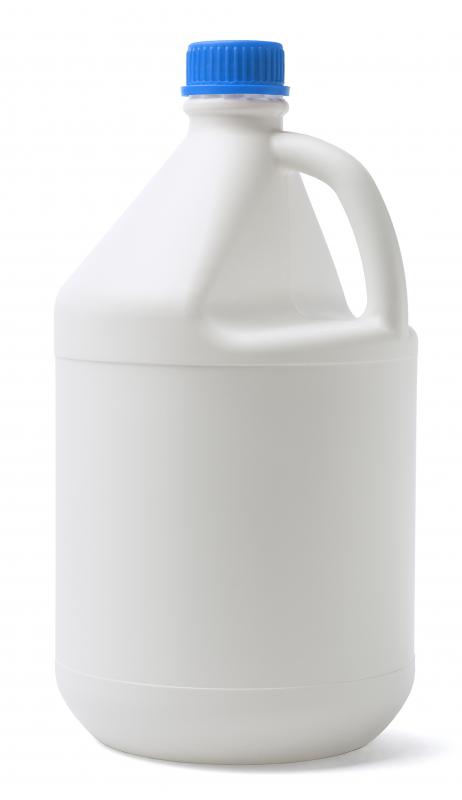At HomeQuestionsAnswered, we're committed to delivering accurate, trustworthy information. Our expert-authored content is rigorously fact-checked and sourced from credible authorities. Discover how we uphold the highest standards in providing you with reliable knowledge.
How Should I Trim Shrubs?
To keep plants healthy and beautiful, Edward Scissorhands isn't the landscaper to turn to. He has the wrong tools and he shears, rather than prunes, shrubs. Luckily, the proper tools and a little know-how are all it takes to trim shrubs correctly. While no shrub is pruned the same way or at the same time of year, there are some basic facts a good gardener or landscaper should know. Proper maintenance is important to keep its size under control as well as to ensure that shrubs stay healthy.
Shearing can reduce the size of formal hedges and topiaries, but as a rule of thumb, shearing should not be done in place of pruning shrubs, as pruning is much healthier for the plant. Shearing, also known as trimming, often results in creating homogenous ball and square shapes, much like the end result of Edward Scissorhands' gardening efforts. On the other hand, selective pruning deals more with maintaining the natural shape of the shrub while also reinvigorating the plant for the coming season.

Other problems that result from shearing affect the shrub's appearance and health. For example, improper shearing can turn a plant into a witch's broom with multiple shoots developing at the point of cut. This can give the plant the appearance of a dense top with a base without leaves. Witch's brooms prevent light and air circulation, which in turn affects a plant's growth.

Additionally, gardeners claim that it is okay to shear or trim shrubs multiple times per year, but gardeners also recommend that pruning should be done no more than once per year. If a gardener is pruning a plant more often, then the pruning is not being done correctly or the shrub is planted in too small a space. In the case of the latter, the shrub should be replanted in a spot that has more room.
To trim shrubs correctly, knowledge and timing is everything. Before beginning, a good gardener will know what kind of shrub he or she is working with; what the natural shape of the shrub is: conical, globe, upright, or contorted; and what conditions the plant requires, such as sunlight, shade, wet soil, or dry soil. Flowering shrubs should be pruned only after the plant's flowers have faded, because this is when the shrub begins to grow buds for the next season. Good gardeners also typically avoid pruning after it has just rained or when the air is damp, as wetness encourages spore growth.
Before a landscaper begins to trim shrubs, he or she should sanitize the tools so they don't spread spores and insects from one plant to the next. Most pruning is done with hedge clippers, but other tools are also used, including hand pruners for selective pruning; large, long-handled loppers for thick branches; and pole saws for higher branches. A pruning saw, or a pruning chain, also makes the job much easier. While many different clippers work, electric pruners are not often used as they are better at shearing.
After determining the right time to prune and after sanitizing the tools, gardeners trim shrubs to a predetermined height and width, by cutting close to the terminal bud. For larger plants, pruning also involves thinning the plant by removing all the large, old branches right down to the soil so as to remove all diseased and insect-prone wood. Additionally, the gardener always makes sure that the top stays narrower than the base so that a witch's broom doesn't form. The pruning process involves a lot of trimming and cutting in order to open up the middle of the shrub to airflow and sunlight, which encourages growth of new branches and, in turn, new leaves.
AS FEATURED ON:
AS FEATURED ON:












Discussion Comments
I have to admit that my hubby gets a little happy with yard tools from time to time, and not always for the better. So, I’m always checking to make sure he hasn’t edged away my glads and lilies or ‘accidentally’ chopped down a rose bush.
You can imagine my horror when he decided it was time to trim the flowering shrubs around the house – before they had bloomed! I did not catch him before he had chopped off every single possible flower!
Needless to say, he got a stern lecture on when to trim shrubs, and was in the dog house for a little while, too.
Truthfully, I have always been afraid of pruning because it seems so specialized and I didn't really know how to trim shrubs. I actually let a few of our red tips go for a couple of years without touching them.
I thought they were diseased or something because they looked so scraggly, and I was tempted to just chop them down. But I honestly have a soft spot for trees and bushes, and I don’t like getting rid of one unless I just have to.
Anyway, they looked so bad this year that I thought, “Well, they can’t get any worse. Might as well try trimming them.”
And what do you know, they are stunning right now! I was amazed at the way they shot up after getting a good clipping and how vibrantly red their leaves are now!
Post your comments